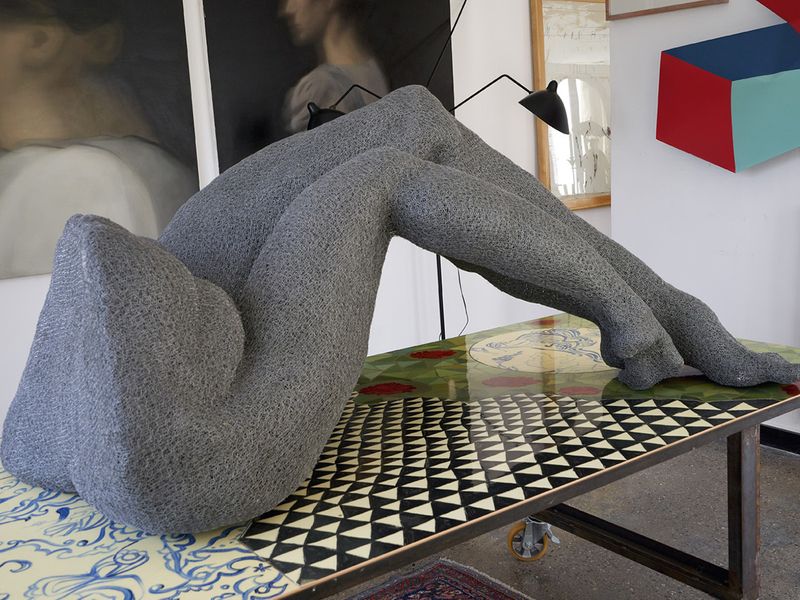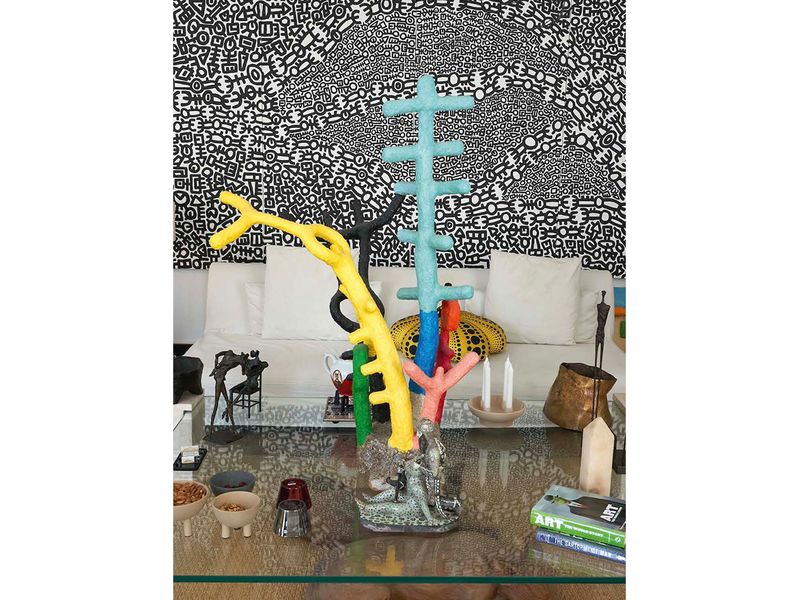
It is unlikely you can walk by this beachside corner without glimpsing the white villa and the skeleton of a boat, which likely once carried local pearl hunters, partially buried in the sand directly in front. Nestled in the heart of Jumeirah, Abdulla Al Kaabi’s one-storey villa has become home to a magnificent collection of art in a gallery-like setting, curated by Farshad Mahoutforoush, a talent-hunter and a talent himself.

“Art is essential to my life… to my existence,” says the Iranian-Canadian, a passionate art lover, as he prefers to be introduced and known, despite his remarkable contributions in domains beyond art. He offers us a drink and warmly welcomes us to the space where he keeps just some of the artwork collected during what he calls a “perpetual endeavor for everything that comes deeply from the soul.”

There have been two turning points in Farshad’s life. The first was at the age of ten, when he and his family were forced to uproot from their country and move to France after the Iranian revolution. The second was when he returned, in his twenties, to lay even stronger and deeper roots in his homeland. Farshad has been since engaged in a constant search for new and emerging talents.

“My house has always been a platform to bring together emerging writers,” explains the art patron who is credited with launching the career of Farhad Moshiri, one of the most popular living Middle Eastern contemporary artists, among others. Farshad has always supported emerging artists along their journey, nourishing them to evolve and succeed. “I usually get to know the artists themselves personally,” he says. “I invite them to my universe. I build trust with them, and explore their philosophy and vision.” Dressed in a sleek black suit, Farshad sinks into the sofa and his face glows with the pride of the moment as he tells the story of an artist he discovered. “I remember I bought his first work for a hundred dollars. Now the most recent purchase was for 100 thousand dollars.”
The laid-back atmosphere – enhanced by the island ambience, the Greek-inspired style and the relaxing background music – instantly transfers us into a magical world as we begin our tour of a place where Farshad’s flair for art and interior design infuses everything. “This place was originally a ruined fisher-man’s house, which Abdulla restored and brought to life,” says Farshad, as he shows us around the villa. “I decorated it myself, preserving the beach-like ambience and incorporating contemporary Jumeirah house styles. It has allowed me to showcase some of my favorite art pieces, which embody the journey of our collaboration together in filmmaking,” says Farshad, who is also a producer and co-founder of El Booma Film, and is now experimenting with film production as an art form.
On the wall of the living room, which Farshad chooses as a back-drop for our interview, hangs one of his favorite pieces. It is by his friend Mohamed Ahmed Ibrahim, a conceptual contemporary Emirati artist. “This is a repetitive, meditative piece that inspires me to think of infinity,” he says. “It features the artist’s own form of language, and symbols of abstract form, inspired by ancient cave drawings.”
The art curator, and passionate collector, tells us enthusiastically about a colourful, three-dimensional art piece by Emirati artist Shaikha Al Mazrou, which resides on the wall of the dining room. “She is part of a young, dynamic generation of UAE sculpture artists. She explores forms, material and geometry, always denoting a dichotomy in her pieces.”
Next Farshad points to a sculpture which lies on the floor by Paridokht Moshkzad, an Iranian artist. “This piece explores the duality in each of us and the mysterious other,” he explains. “It is part of a series called Hermaphrodite, made of several layers of chicken mesh which she weaves to create several layers on top of each other, like hard lace. The fragility of lace in a hard metal wire.”
Turning again to the painting by Mohamed Ahmed Ibrahim, Farshad reflects on a work which for him embodies the infinity of the universe, and an idea that has had a powerful impact on his life. “If my heart had a compass it would lead me to the end of the universe – if it ever has an end.”


